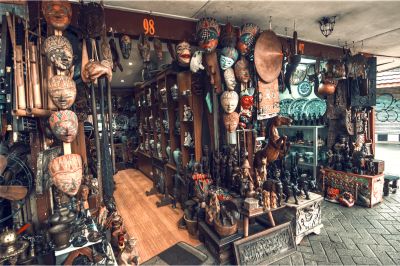
7 Original Indonesian Ethnic Bags, Rich in Philosophical Values

Indonesia is famous for the diversity of tribes spread across the archipelago. Based on this, it is not surprising that each region in Indonesia has cultural diversity with its own characteristics. Not only traditional clothes and dances, but we can also see cultural characteristics from the variety of handicrafts or craft products of every region in Indonesia. One of them is an Indonesian ethnic bag.
Handicrafts in the form of ethnic bags typical of the archipelago also become the identity of a region since bags are objects that are very close to people's daily lives. That is why each region has its own uniqueness in the design of these original Indonesian ethnic bags.
Usually, this typical Indonesian ethnic bag is made by knitting, wattling, or weaving. The manufacturing process is influenced by the local wisdom of each region, including the selection of basic materials for making these ethnic bags.
So, what is the uniqueness of each of these original Indonesian ethnic bags? Here are some ethnic bags from various regions in Indonesia:
Noken
One of the original Indonesian ethnic bags is "noken". This bag is made of manduam and nawa tree bark fibers. Having a perforated shape and flexible texture, this bag is used to carry the daily groceries of the Papuan people. The way to use it is unique. The noken is not carried around but is slung over the forehead or head.
Based on its philosophy, the typical Papuan noken is believed to symbolize a good life, fertility, and peace for the people of Papua. Due to its uniqueness, this traditional Papuan bag is included in the UNESCO Intangible Cultural Heritage list.
Anjat
Another authentic Indonesian ethnic bag comes from the Dayak Kenyah tribe, East Kalimantan, namely "anjat." The Dayak people make this traditional bag from tubular rattan leather. Anjat has a tube-like shape with slits, a height of about 70 cm, and a circular outline of about 50 cm.
Dayak men use anjat ethnic bags to store supplies when hunting. Meanwhile, Dayak women use anjat bags to store clothes or food when gardening. Apart from its unique shape, anjat bag is also easily recognized by the typical Dayak motif on the body of this bag.

Photo: A craftsman making koja bags from the Baduy Tribe (Shutterstock/wisely)
Koja
Another authentic Indonesian ethnic bag is the koja. The Baduy tribe makes these ethnic bags from the bark of the teureup tree. They dry the bark, split it into small pieces, and then weave it into the shape of a bag.
For the Baduy people, koja has become part of their daily lives. Usually, people use this bag for farming, crop growing, and fishing activities. Besides being blackish brown resembling bark, another uniqueness of the koja bag is that it will decompose naturally when the owner does not use it anymore.
Woven bag
One of the popular souvenirs from West Nusa Tenggara (NTB) and East Nusa Tenggara (NTT) is woven bags, usually with tassel ornaments at the bottom, to enhance their appearance. Another uniqueness of this woven bag is its various unique motifs, such as bird, subahnale, enggok, peacock, and wayang motifs.
In addition, woven bags are also marketed overseas, namely to Brazil, Australia, and the United States. Because of its uniqueness, people often use woven bags as souvenirs at international events. One of them was at the 42nd ASEAN Summit in Labuan Bajo last May. Mrs. Iriana Joko Widodo gave woven bags to assistants to ASEAN leaders.
Rattan bag
Not only stunning natural beauty, Bali is also famous for its worldwide craft products. One of them is various rattan handicrafts, including rattan bags. Uniquely, besides the typical Balinese rattan bag, it is also often called a "wheel bag" because of its round shape, like a wheel, with various unique motifs.
Made of Palmae rattan, the method of making this bag is woven directly. Several centers for making Balinese rattan bags include the Ubud Art Market, Sukawati Art Market, and Kumbasari Art Market.
Sepu
Another authentic ethnic bag of the archipelago is "sepu". Originating from Toraja, South Sulawesi, this sling bag is made of pa'tannun, or woven cloth that the Toraja people make themselves for a week with a loom.
For the Toraja people, the sepu ethnic bag is usually paired with traditional clothes, especially for Toraja women when they attend such traditional events as Rambu Tuka (wedding), Marara Banua (house celebration), and Rambu Solo (death ceremonies).
Beaded bag
No less interesting, the beaded bag typical of the Dayak tribe is also an original Indonesian ethnic bag that is interesting to own. This craft product is made of beads with typical Dayak motifs. Interestingly, the beaded motif on this ethnic bag is not just a decoration.
The Dayak people believe the beads have their own magical value: repelling bad/unlucky things and giving people a zest for life. We can find these typical Dayak bead bags in Palangkaraya, Central Kalimantan.
It turns out that authentic Indonesian ethnic bags are no less stylish than other craft products. Let's mix this ethnic bag with an OOTD to the office, Sob!
Cover: Illustration of Papuan people using noken (Shutterstock/Billy Julius Krey)

Related News







